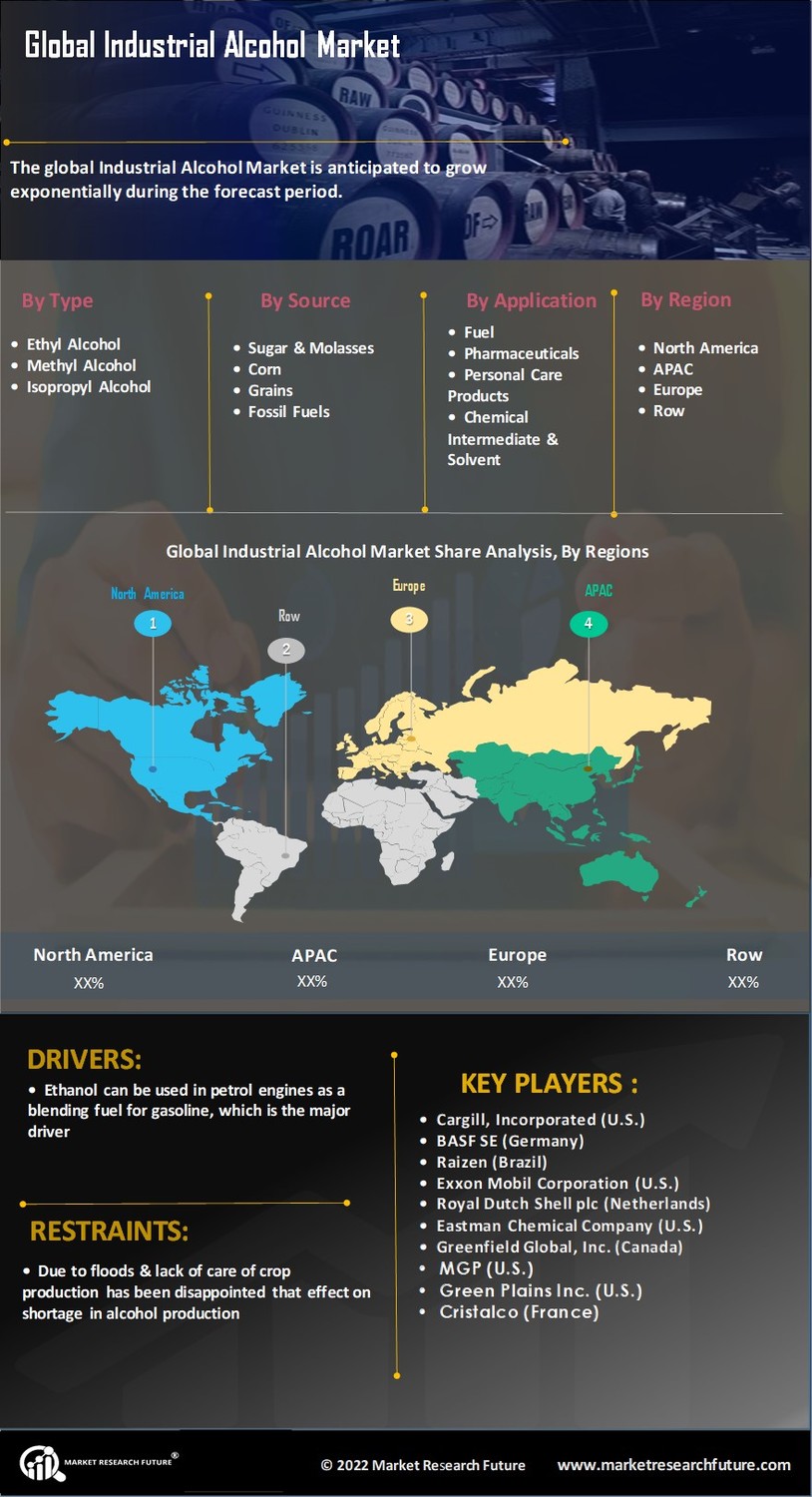Rising Demand for Biofuels
The increasing emphasis on renewable energy sources is driving the demand for biofuels, which are derived from industrial alcohol. The Global Industrial Alcohol Industry is witnessing a surge in the production of bioethanol, a type of biofuel made from fermented sugars. In 2025, the biofuels segment is projected to account for a substantial share of the market, as governments and organizations push for cleaner energy alternatives. This shift towards biofuels is not only aimed at reducing greenhouse gas emissions but also at enhancing energy security. The market for biofuels is expected to grow at a compound annual growth rate (CAGR) of over 5% in the coming years, indicating a robust opportunity for industrial alcohol producers.
Growth in Food and Beverage Sector
The food and beverage industry is a notable consumer of industrial alcohol, particularly in the production of flavorings, extracts, and preservatives. The Global Industrial Alcohol Industry is poised to benefit from the expanding food and beverage sector, which is increasingly utilizing alcohol for its functional properties. In 2025, this sector is likely to account for a considerable share of the market, as manufacturers seek to enhance product quality and safety. The demand for industrial alcohol in food applications is projected to grow at a CAGR of approximately 3.5%, reflecting the ongoing trends towards clean label products and the need for effective preservation methods.
Expanding Pharmaceutical Applications
The pharmaceutical sector is increasingly utilizing industrial alcohol for various applications, including the production of medicines, sanitizers, and other healthcare products. The Global Industrial Alcohol Industry is benefiting from this trend, as the demand for high-purity alcohols, such as ethanol and isopropanol, continues to rise. In 2025, the pharmaceutical segment is anticipated to represent a significant portion of the market, driven by the growing need for effective antiseptics and disinfectants. The market for industrial alcohol in pharmaceuticals is projected to grow at a CAGR of approximately 6% over the next few years, reflecting the sector's critical role in healthcare and the ongoing focus on hygiene and safety.
Increased Use in Personal Care Products
The personal care industry is increasingly incorporating industrial alcohol in the formulation of various products, including cosmetics, perfumes, and skincare items. The Global Industrial Alcohol Industry is experiencing growth as consumers demand products with higher alcohol content for their perceived efficacy. In 2025, the personal care segment is expected to contribute significantly to the overall market, as brands seek to enhance product performance and shelf life. The market for industrial alcohol in personal care is projected to grow at a CAGR of around 4% in the coming years, driven by trends towards premiumization and the increasing popularity of natural and organic products.
Regulatory Support for Industrial Alcohol Production
Regulatory frameworks are increasingly supporting the production and use of industrial alcohol, particularly in the context of sustainability and environmental protection. The Global Industrial Alcohol Industry is benefiting from favorable policies that promote the use of renewable alcohols and bio-based products. In 2025, various governments are expected to implement incentives and subsidies aimed at boosting the production of industrial alcohol, which could lead to increased market penetration. This regulatory support is likely to enhance the competitiveness of industrial alcohol against fossil fuels, potentially leading to a market growth rate of around 5% in the coming years, as industries adapt to changing regulations and consumer preferences.


















Leave a Comment